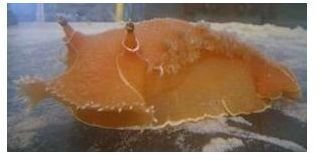How Sea Slugs Use the Sun's Energy in Plant Like Ways
Modern scientific research revealed many amazing facts about sea slugs. These mollusks navigate in the sea according to smells, use currents to escape predators, and alter the shape of their bodies to control movement speed. Yet the latest discovery leaves the rest far behind: scientists now say that sea slugs can derive energy from photosynthesis – a process previously observed only in plants.
Photosynthesis in itself is nothing new. Plants and algae absorb sunlight and transform it into vitally important energy using water and carbon dioxide taken from the environment. The byproduct of photosynthesis is oxygen – the essential gas that makes our air breathable. In a way, plants are like living solar cells, only they consume the produced energy for their own benefit and survival.
One evolutionary theory suggests that before animal life could appear, various plants had to saturate the atmosphere with oxygen for billions of years – eventually rendering the air suitable for more complex life forms. But who could fathom an animal that would borrow photosynthesis, upgrading it into a mobile food factory?
Enter elysia chlorotica, a sea slug that feeds on a particular kind of algae. The creature sucks the juices out of its favorite marine plant, and keeps them inside its belly. The juices contain tiny organisms called “plastids” – these are the particles that trap sunlight and convert it into energy. Amazingly enough, plastids continue to do their job inside the sea slug!
A team of biology researchers found out that the mollusk completely relies on the alga for survival; newly born slugs must seek the alga and suck out as much juices as they can in order to survive and develop into fully grown adults. Once fully fed, the slug can continue living for nine months without having anything to eat… except sunlight.
Furthermore, the creature actually carries a gene that allows it to complete the process of photosynthesis. Scientists continue to work on deciphering its genome, and some are willing to hypothesize about the next surprise evolution might have in store for us: a fully photosynthetic animal, with all the plastids and genes, in one package, preprogrammed into its organism.
